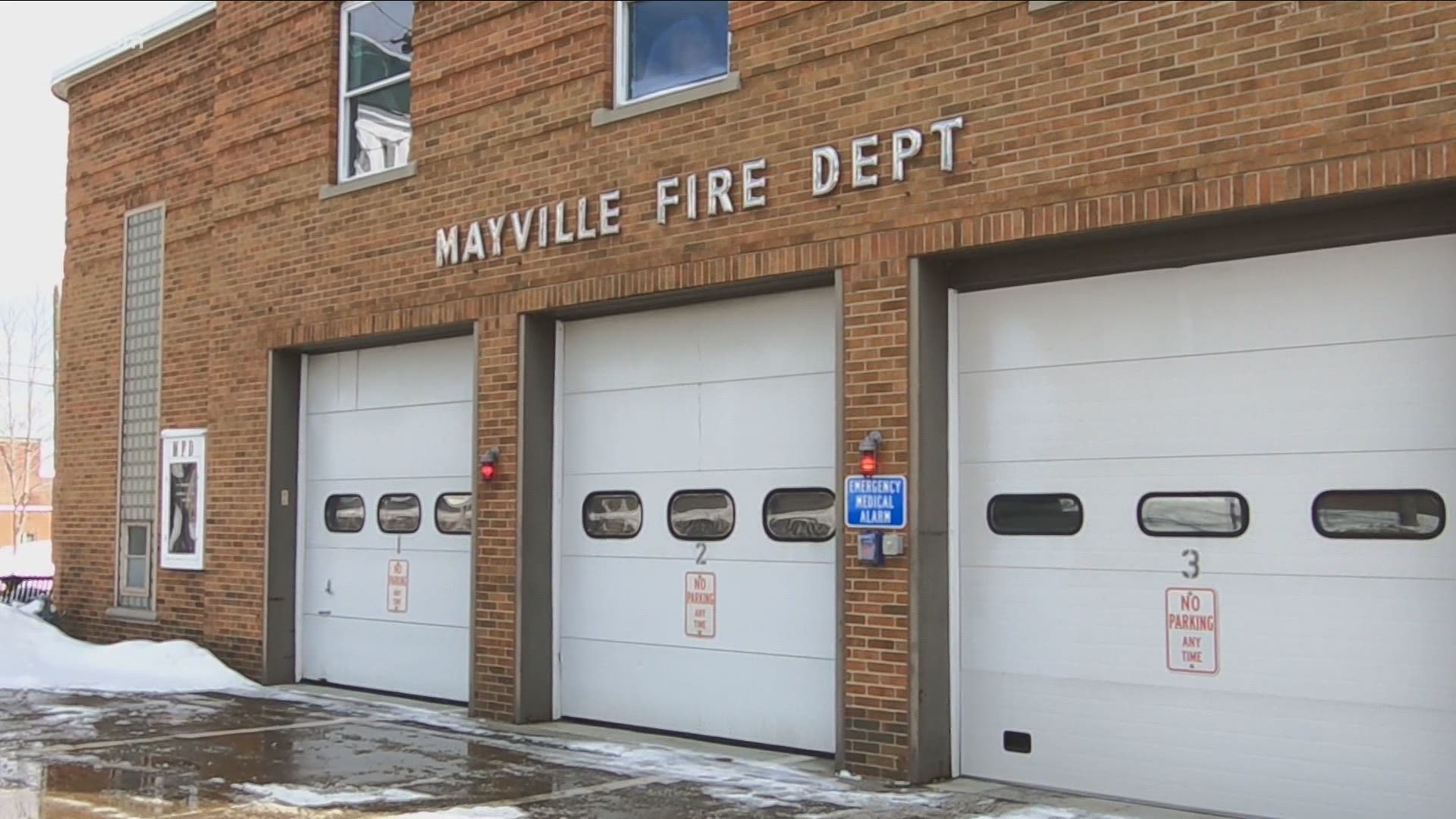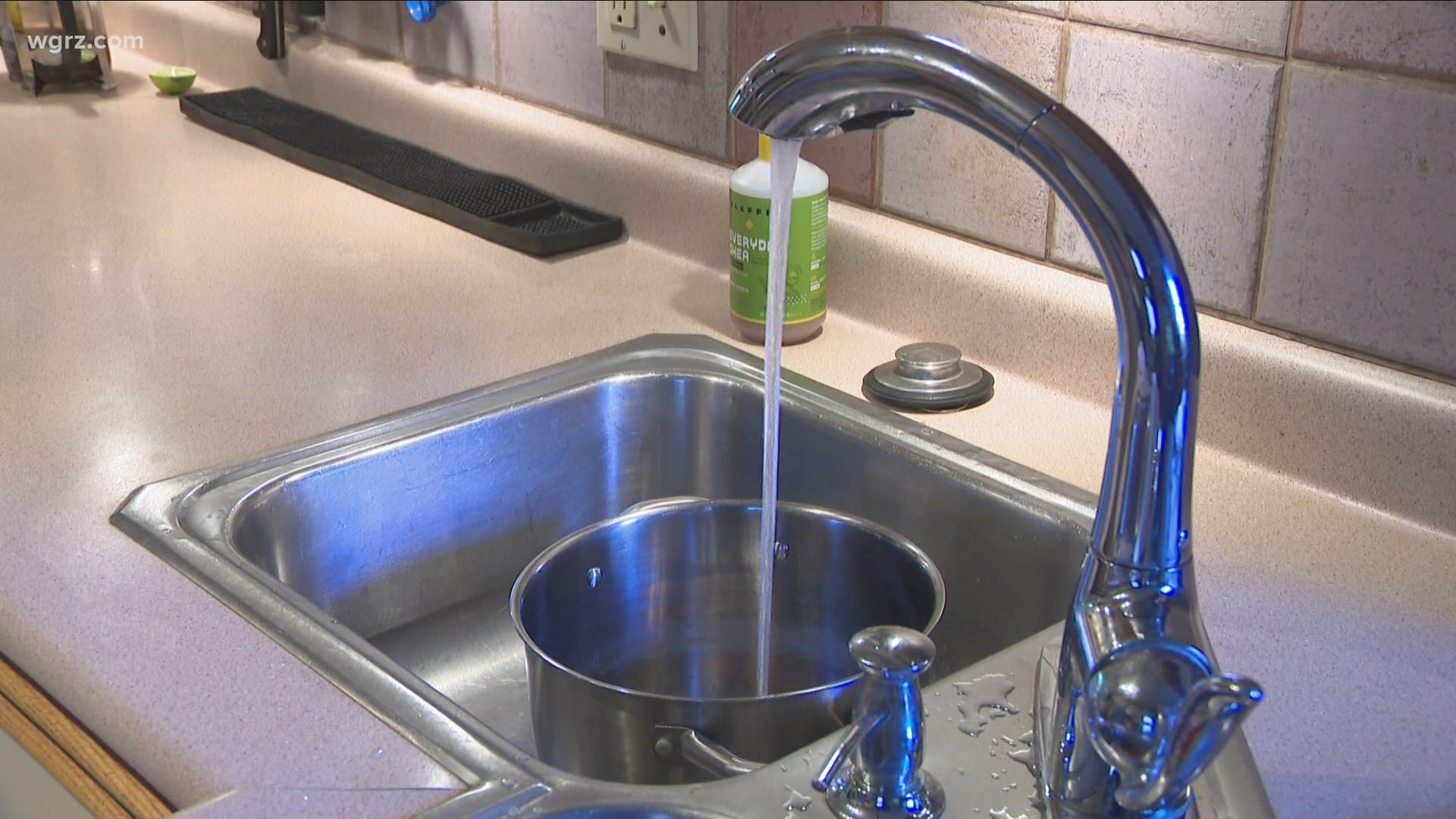BUFFALO, N.Y. — Chautauqua County officials, working along side investigators from the New York State Department of Environmental Conservation, believe they've identified the source of chemical contaminants that got into the village of Mayville's drinking water supply.
Levels of perfluorononanoic acid (PFNA) were discovered in three of the village’s water wells at levels high enough to advise residents there not to drink it in early December.
The advisory was lifted two weeks later when the village was able to bring a new well on-line to supply safe, contaminant-free drinking water to customers.
"It has zero PNFA, and we probably have the best water coming out of it that we've ever had," Mayville Mayor Ken Shearer said.
Team effort
That newest well, which the village had planned to activate this coming summer, had already been drilled.
And while that was fortunate, Shearer had high praise for the employees of the village's Department of Public Works, which he said did yeoman's work in their effort to get it operational during the emergency.
"They did a great job," Shearer said. "They went from having a pipe standing in the middle of a field, and in a matter of three days they built a road to it, put power to it, put a pump on it, and hooked it to our system, and got it running."
However, that still left open the question of where the chemical that contaminated the three existing wells the village had been using was coming from.
Finding the source of the problem
The state DEC was called in to do some sleuthing on the possible source of the PNFA, which is used to make a variety of products including foam used in firefighting.
The DEC sank a half dozen test wells and obtained water and soil samples from a variety of locations around the village.
William Boria, Director of Environmental Health Services for the Chautauqua County Department of Health and Human Services, worked with DEC personnel on their investigation and also praised their efforts.
"The state made this a priority and worked remarkably fast," Boria said. "They did a heck of a job in a short period time getting contracts in place to drill their test wells, to analyze their samples, and doing their necessary recognizance on this."
Part of that recognizance involved interviewing local residents and officials, and through them they learned that between 2014 and 2018, firefighters had been using the former football field behind the old Mayville High School for training exercises.
Those training exercises involved the use a type of firefighting foam, which contains PNFA.
According to a draft report on their investigation the DEC found that "the most significant concentrations ... were detected at the former football field. Samples from this area indicate that the football field is a primary source area of PFNA."
The former football field is located on a hill near the western boundary of the village, and has a drainage system beneath it. A convenient path, perhaps, for the contaminants to have traveled through the ground water, toward the village water wells located in a valley about a half mile away.
And, as first reported by the Post Journal newspaper, officials have pretty much identified the firefighting foam used at the former football field as the culprit.
What's ahead
The village board was advised of the preliminary findings on Tuesday by Boria, who noted that while there is not a lot known about the effects of PNFA on humans (and that testing for it in public water systems wasn't even required before December) it can at least be presumed that any exposure to it through the village water system had not been occurring for a long period of time.
He also noted that with the wells being located one half-mile away from the suspected source of the PFNA, it would have taken some amount of time, perhaps a few years, for it to have migrated through the ground water and to have concentrated to the levels detected in those wells.
For now, the village has just one operating well and will have to find a secondary source of water to ensure a continued ample supply.
It could drill another new one, but that could take a considerable amount of time and money, between finding a suitable location and purchasing the land or acquiring an easement.
Or, if the contaminants at the former football field can be contained, then it is possible that the three existing wells which had been tainted, once they are properly treated and flushed, could resume operation.
"We're exploring all of our options at this point and trying to figure out the best way to go," Mayor Shearer said.


